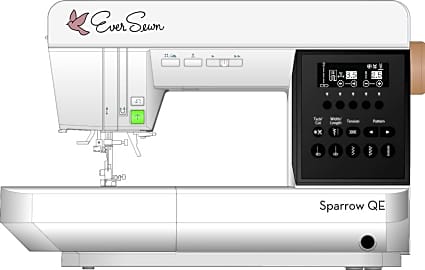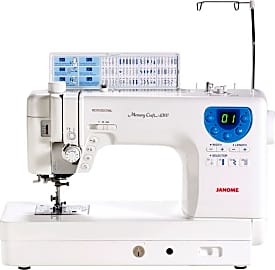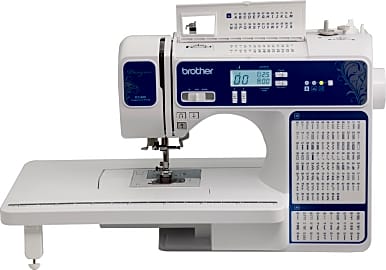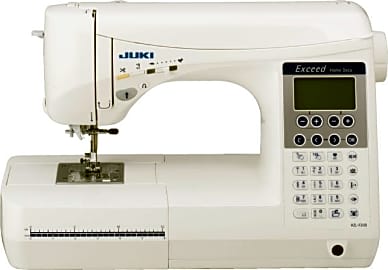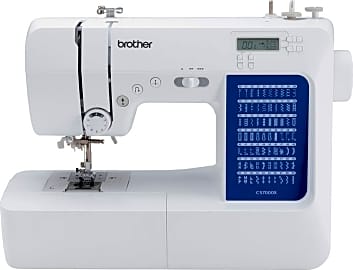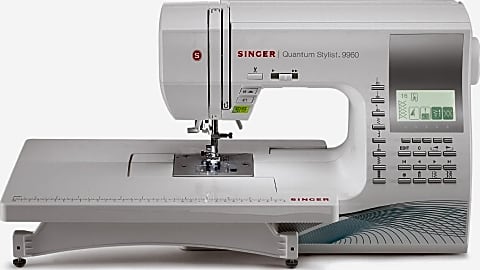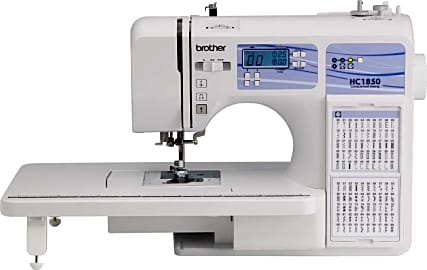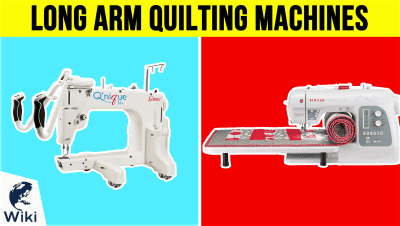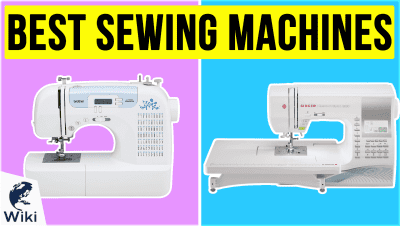The 10 Best Quilting Machines

This wiki has been updated 44 times since it was first published in April of 2015. With some handcrafted quilts selling for huge sums, you could do worse for a home business. Of course, it's also fine if you just want to create a cherished hand-me-down for your family. Either way, you'll find the perfect machine for your needs on our list. We've included models for both beginners and the more experienced, at various price points to meet a wide variety of budgets. When users buy our independently chosen editorial picks, we may earn commissions to help fund the Wiki.
Editor's Notes
August 28, 2020:
If you don't have the budget or space for a long-arm machine, any one of these quilting machines will do the trick, allowing you to express your creativity while making useful objects. Popular models from Juki still come out on top, including the Juki TL-2000Qi Mid-Arm and the Juki HZL-F600. These are feature-rich machines that feel sturdy, much like the EverSewn Sparrow QE, a new addition. But what is one thing these machines aren't? Inexpensive. For those on the lookout for a budget-friendly model, we added the Brother CS7000X, an upgraded version of the CS6000i. This new model has more built-in stitches, at 70 to the latter's 60, but its top speed is lower: 750 SPM versus 850. This is a small difference that probably won't be a dealbreaker to many, but it's worth mentioning for those who prefer to fly along at top speeds. The Brother HC1850 is one to consider, as well, especially if you plan on bringing your sewing machine to classes. It takes the place of the Brother Laura Ashley Limited Edition, which as you may guess from the name, can be tough to find.
May 23, 2019:
Because of the number of features you get for the price, along with the roomy throat, we still think the Juki TL-2000Qi Mid-Arm is a top choice for the majority of serious beginners to intermediate sewists. For the more experienced, the Juki HZL-F600 is an option to consider, although it's pricier thanks to enhanced features and digital controls. As to Brother options, the PQ1500SL High Speed is the one to beat at this time, with one caveat: some, but not all, users find the bobbin tough to drop in. We also like their CS6000i, but it doesn't offer a very large throat, so you might opt for this model if you do a lot of sewing and some occasional small quilting projects. Finally, we elected to keep the Singer 9960 Quantum Stylist, although it does have one small drawback, which is that you cannot use the quilting bar and walking foot at the same time. On the other hand, it's relatively inexpensive for a metal-frame, computerized machine, so it still has a lot to offer.
Special Honors
Bernina 570 QE If you often find yourself tackling big projects, then the Bernina 570 QE can offer the space you need for comfortable work. You can choose a model with or one without the embroidery module, but as you might imagine, neither comes particularly cheap. bernina.com
Husqvarna Viking Opal 650 When it comes to user-friendly operation, it's tough to beat the Husqvarna Viking Opal 650, a modern computerized model with three bright LEDs, a sew-on button program, and personal programmable stitch settings. Be prepared to visit a dealer to purchase one. husqvarnaviking.com
Pfaff Quilt Expression 4.2 The Pfaff Quilt Expression 4.2 will cost you a pretty penny, but it puts pretty quilts easily within your grasp and is a fine tool for true professionals. Featuring the company's Integrated Dual Feed system, this model makes smooth, even work a breeze, while the electronic knee-lift adds to its overall usability. pfaff.com
Hand Quilting Versus Machine Quilting
When using thicker fabrics, machine quilting is much easier than hand quilting.
Quilting is not a new art in any sense of the word, and long before quilting machines were around, people were hand quilting and loving it. Even with the advent of quilting machines, there are a select few who still prefer practicing the traditional method of hand quilting for a variety of reasons.
Those who are on a tight budget, but still love to quilt, will appreciate that hand quilting is considerably cheaper than machine quilting. It requires nothing more than some fabric, needles and thread. The downside though is that it takes much longer to finish a quilt. In addition to being faster, most people consider machine quilting to be an easier skill to learn. Machine quilting can also be performed by those with hand problems, such as arthritis or carpal tunnel syndrome, whereas hand quilting would be painful and impractical.
Taking a hand quilting project on the road is also much easier than trying to deal with the logistics of transporting a large and heavy quilting machine. If one is going on vacation or likes to quilt in a variety of locations around the house, using a quilting machine can become more of a hassle than a help. But for people who will be sewing at the same place most days, a quilting machine is usually the preferred method.
In addition to speed, one of the biggest benefits to machine quilting is the durability of the finished product. Machine-sewn quilts are more durable than their hand-stitched counterparts and often last for many more years before the stitching begins to come loose. They also stand up to regular use and repeated washing better.
When using thicker fabrics, machine quilting is much easier than hand quilting. It can be very difficult and require a good bit of strength to hand quilt overly thick fabrics with heavier batting, but with a quilting machine the process isn't any more difficult or time consuming.
Features To Look For In A Quilting Machine
While it is possible to quilt with any sewing machine, there are a few features that dedicated quilting machines generally have to make the process of quilting easier. Needle up and needle down is one such feature. Some sewing machines only allow the machine to stop with the needle in the up position, but for quilting, it is often beneficial to be able to pause for a moment to readjust your hand position without having to worry about your project moving around.
Another feature important to free motion quilting is a darning foot.
The needle down function accomplishes this. It allows the machine to be stopped with the needle in the down position, so it can be used to hold your project in place while you sip your tea or take a small break. Some machines have a button specifically for this feature.
For free motion quilting, the ability to drop or cover the feed dogs is invaluable. This is because you need to be able to move the fabric freely under the needle, but the feed dogs move the fabric in a single direction. Once dropped or covered, they no longer drag on the fabric of the quilt. Another feature important to free motion quilting is a darning foot. This allows you to clearly see the area around the needle, unlike a traditional foot which obstructs the view.
Most quilting machines don't come with a darning foot, but some models are compatible with them and some are not. Double check before purchase to ensure the quilting machine you are buying allows for the installation of one.
Brief History Of Quilting
Historians are unsure of the origins of quilting, but it is known that the practice dates back thousands of years. The oldest known quilted garment adorns a carved ivory figure of an Egyptian First Dynasty pharaoh which dates back to 3,400 BCE A quilted floor covering was discovered in Mongolia in 1924. It is believed that it dates back to sometime between 1 BCE and 2 CE.
The oldest surviving bed quilt comes from 14th century Sicily and is made from a combination of linen and wool.
Over time there have been numerous references to quilts in literature. It is believed that Crusaders brought quilting back to Europe with them after their escapades in the Middle East sometime in the late 11th century. During the Middle Ages, quilts were often wore by knights underneath their armor for comfort or as an outer covering to keep expensive metal armor from the elements.
The oldest surviving bed quilt comes from 14th century Sicily and is made from a combination of linen and wool. It depicts scenes from the legend of Tristan and measures 122" x 106". It is currently housed in the Victoria and Albert Museum in London.
As settlers made their way to the new world, they brought with them the practice of quilting. One of the earliest references to quilts in the new world is from the listings of household inventory of a Massachusetts sea captain. Nearly all of the quilts from earliest American settlers were made from salvaged fabric and as such, none of them have have survived to the modern day.
It is believed the oldest surviving American quilt was the Saltonstall quilt, which was thought to date back to 1704, but recent research seems to point towards its fabrication being some time in the latter half of the 18th century.



